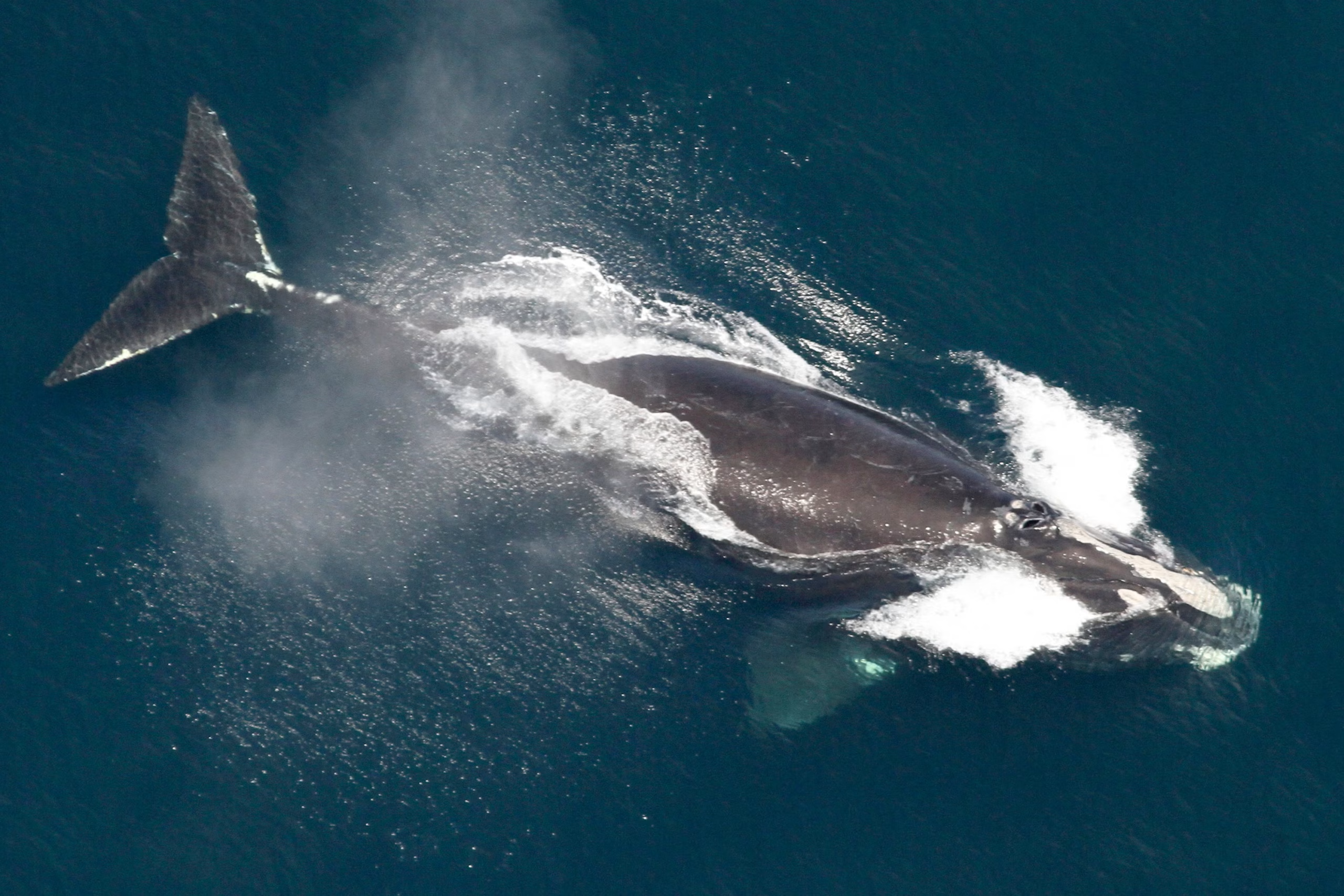mchec.org – The North Atlantic right whale, one of the most endangered marine mammals on Earth, is a symbol of both the wonders and challenges of ocean conservation. Known for its distinctive appearance and slow-moving nature, this whale has suffered significant population declines due to human activities, particularly shipping and entanglement in fishing gear. With only a few hundred individuals remaining, the North Atlantic right whale is now facing an urgent fight for survival.
Physical Characteristics
The North Atlantic right whale is a massive creature, reaching lengths of up to 52 feet (16 meters) and weighing as much as 70 tons. It has a robust, stocky body with a broad head, making up about one-quarter of its total length. One of the most notable features of this species is the absence of a dorsal fin, giving it a smooth, almost humpbacked appearance. Its dark black or grayish body is often marked with patches of white on the belly and callosities (roughened patches of skin) on the head and lower jaw, which are unique to each individual and can be used to identify them.
These whales are also known for their baleen plates, which are used to filter small organisms, such as plankton, copepods, and krill, from the water. Their large mouths, which can open wide enough to take in massive amounts of water, help them feed efficiently despite their size.
Habitat and Distribution
Historically, the North Atlantic right whale was found along the eastern coast of North America, ranging from Canada to the southeastern United States. Today, their range is much more restricted, with the majority of the population migrating between feeding grounds in the waters off New England and Canada to calving areas off the coast of the southeastern United States, particularly off Georgia and Florida. The migration between these areas is critical for their survival, as it allows the whales to find abundant food in summer and give birth in warmer waters in the winter.
The North Atlantic right whale has a strong preference for coastal and continental shelf waters, which makes it vulnerable to human activities such as shipping and fishing. These areas provide a rich food supply, but they are also heavily trafficked by vessels, putting the whales at risk of collisions.
Diet and Feeding Habits
North Atlantic right whales are filter feeders, using their baleen plates to strain small marine organisms from the water. Their diet primarily consists of copepods—tiny crustaceans that gather in dense swarms in certain areas. Right whales feed by swimming with their mouths open and then using their tongue to push the water out, trapping the copepods in the baleen.
The whales typically feed in the summer months in the cold, nutrient-rich waters off the northeastern United States and eastern Canada. This feeding behavior is critical to their survival, as they must accumulate fat reserves to sustain them during their long migration and calving season.
Behavior and Communication
North Atlantic right whales are known for their slow and deliberate movements, both when feeding and traveling. Unlike some other species of whales, they are not known for long-distance migrations but instead follow relatively consistent routes between their feeding and calving grounds.
Communication is an important aspect of the species’ behavior, and right whales are known to produce a range of vocalizations, including moans, pulses, and grunts, that may be used for communication between individuals. These sounds can be heard over long distances and are thought to be used for a variety of purposes, including navigation, social interactions, and possibly mate attraction.
Socially, right whales tend to be solitary or found in small groups, although they sometimes form loose associations during feeding. Calves are often seen traveling closely with their mothers during the migration, and there is evidence that the species has strong maternal bonds.
Conservation Status
The North Atlantic right whale is critically endangered, with an estimated population of only around 350 individuals remaining. The primary threats to the species are human-induced, including ship strikes and entanglement in fishing gear. These threats have had devastating effects on the population, with many whales suffering injuries that affect their ability to feed, reproduce, or migrate.
Efforts to protect the North Atlantic right whale have included regulations to reduce ship speeds in critical areas, the creation of designated safe zones, and improvements in fishing gear to prevent entanglements. Additionally, scientists are closely monitoring the population and tracking individual whales to learn more about their movements and behavior.
Despite these efforts, the North Atlantic right whale’s population continues to decline, and immediate action is required to prevent its extinction. Conservation groups, governments, and scientists are working together to find innovative solutions that will allow this iconic species to recover and thrive once more.
Conclusion
The North Atlantic right whale is a majestic and unique species, whose existence is deeply tied to the health of our oceans. As one of the most endangered whales on the planet, its survival depends on continued conservation efforts, including reducing human impacts and protecting its critical habitats. With focused action and global cooperation, there is still hope that future generations will be able to witness the graceful migration of the North Atlantic right whale along the coasts of North America.

